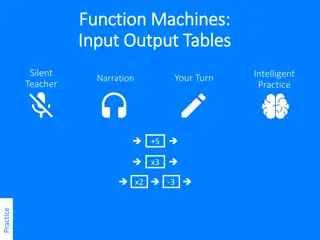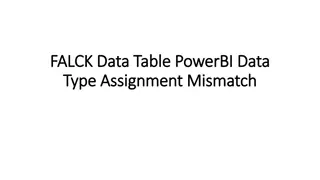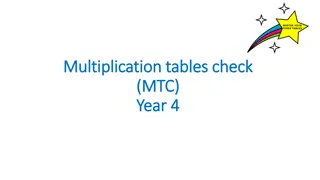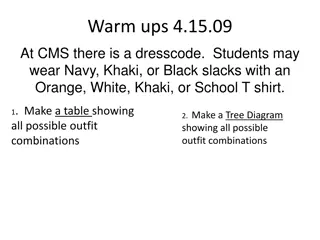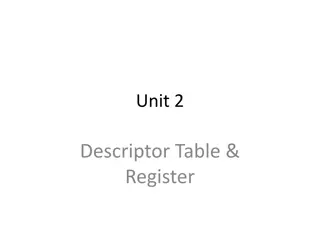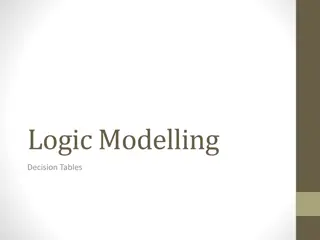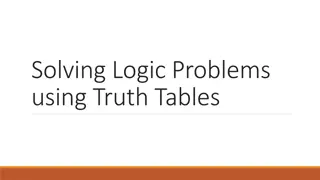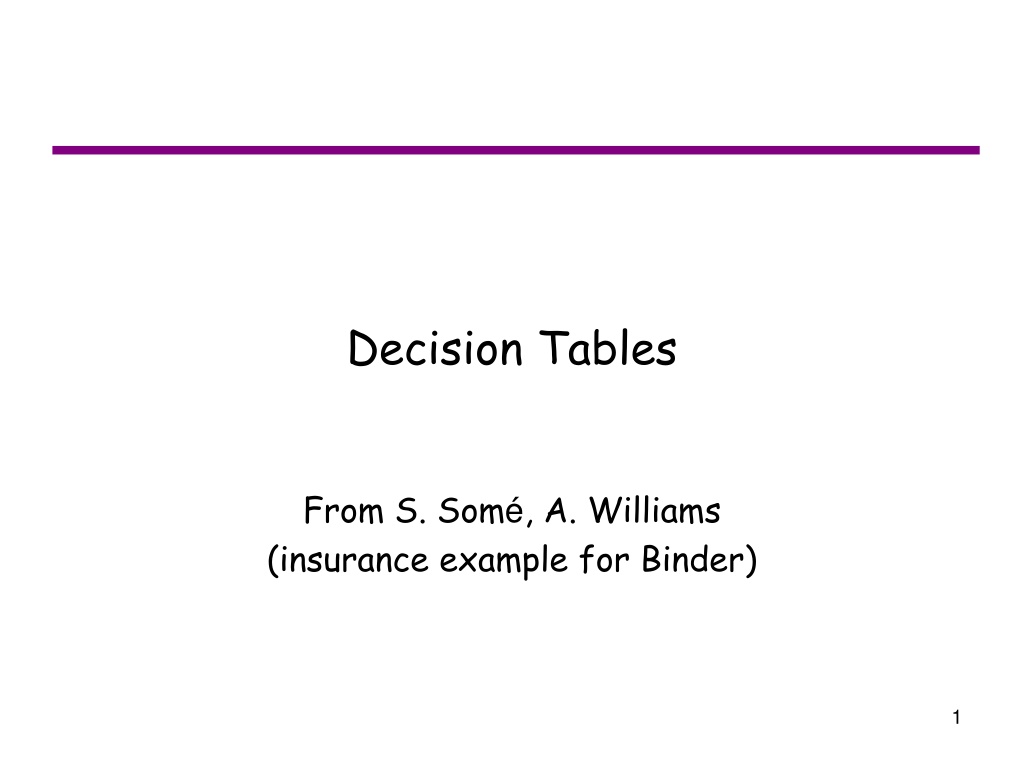
Decision Tables and Models for Insurance Renewals
Explore decision tables and models in the context of renewing auto insurance policies, including identifying variables, conditions, outcomes, and strategies for sensitizing outcomes in a truth table.
Download Presentation

Please find below an Image/Link to download the presentation.
The content on the website is provided AS IS for your information and personal use only. It may not be sold, licensed, or shared on other websites without obtaining consent from the author. If you encounter any issues during the download, it is possible that the publisher has removed the file from their server.
You are allowed to download the files provided on this website for personal or commercial use, subject to the condition that they are used lawfully. All files are the property of their respective owners.
The content on the website is provided AS IS for your information and personal use only. It may not be sold, licensed, or shared on other websites without obtaining consent from the author.
E N D
Presentation Transcript
Decision Tables From S. Som , A. Williams (insurance example for Binder) 1
Decision Models Ideal for situations where: combinations of actions are taken under varying set of conditions conditions depends on input variables response produced doesn't depend on the order in which input variables are set or evaluated, and response produced doesn't depend on prior input or output
Decision Table General Format Combination of conditions (variants) Conditions Selected outcomes Outcomes
Example Suppose the following rules are used to renew auto insurance policies: 1. 0 claims, age 25: raise by $50 2. 0 claims, age 25: raise by $25 3. 1 claim, age 25: raise by $100, send letter 4. 1 claim, age 25: raise by $50 5. 2, 3 or 4 claims, age 25: raise by $400, send letter 6. 2, 3 or 4 claims, age 25: raise by $200, send letter 7. more than 5 claims: cancel policy
Decision Model - Development 1. Identify decision variables and conditions 2. Identify resultant outcomes to be selected or controlled 3. Identify which outcome should be produced in response to particular combinations of conditions See equivalent models from Binder s book: pp.125-128, 132, 145 Resulting test cases; pp.165-168 If you DO model using a decision table, then be aware of table 6.14 p.169
Details: Generating a Truth Table 1. Select an outcome to be present (1). 2. Find all combinations of causes subject to constraints that will set the effect to 1 see next slide 3. Create a column in the decision table for each combination of causes. 4. Having determined the causes for a selected outcome, determine the states of all other outcomes. 5. Repeat for each outcome set to absent (0). 6. Consolidate decision table columns when don t care values can overlap.
Details: Sensitization of outcomes in a Truth Table The goal is to set up the conditions such that changing a condition from 0 to 1 (or vice versa) will also change the desired outcome. That is, a condition is not only sufficient to cause the outcome, but also necessary. Strategies: 1. If an outcome of 1 can be produced by several conditions (an OR constraint), only set one condition to be 1 at a time. 2. If an outcome of 0 can be produced if one of any condition is absent (an AND constraint), set all conditions to 1 except the primary condition. 3. Use the logical negation of these when trying to achieve an outcome of 0.
Don't Care condition Don't Care condition May be true or false without changing the action Simplifies the decision table Corresponds to different implementation cases: Inputs are necessary but have no effect for the variant Inputs may be omitted but have no effect if supplied
Can't Happen & Don't know conditions Can't Happen Condition - reflects assumption that some inputs are mutually exclusive, some inputs can't be produced by the environment, or implementation is structured so as to prevent evaluation Don't Know Condition reflects an incomplete model Usually indication of mis-specification Tests needed to exercise these undefined cases Be careful not to confuse a Don't Care condition with either of the above.






